An FYE Production: What I Learned in Summer Session Is…
The fact that most of us summer session students have only 6 days left in State College until the end of classes is absolutely mind blowing. Although this may seem cliche, it feels as if my roommate and I just moved in yesterday. I cannot wait to go home and see my friends/parents (and sleep in my own bed), but I can’t help but feeling bitter at the same time.
This summer session has been beneficial to me in several ways. First, I have adopted new study habits as opposed to my procrastinator-ways in high school. This simply started with me writing down the dates of my upcoming exams on my calender, and then making sure I started preparing/studying for them at least three days in advance. I found that reading the textbooks repeatedly really helped me absorb the information, and supplementing these readings with note cards to remember keywords and dates helped enormously as well.

Summer session has also taught me how to branch out and meet new people. Throughout most of grade school, I was friends with the same group of people and hardly strayed out of my comfort zone. Don’t get me wrong, I love my best friends from home more than anything, but always socializing with the same people made me realize that I made it difficult for myself when it came to making new friends. At first, I was very shy and not sure how to approach someone or even start a conversation. After my roommate and I bonded though, I became more open to making new friends and was able to break out of my comfort zone and by the end of summer session, I can officially say I have made several good friendships that I hope will last all throughout college (and beyond!).
This summer at State College has taught me many other things, but good study habits and being able to break out of my comfort zone are by far the most valuable things I will be taking away (besides the education of course). I am sad it’s almost over, but in less than 2 weeks I will be back moving in for the start of the FALL SEMESTER!!!
I knew at some point during the summer session at Penn State the feeling of homesickness would end up getting to me. State College is a 3.5-4 hours drive from my house in New Jersey, so it is not like I can easily drive home or be picked up to visit my hometown for the weekend without hours of travel. There are several things I miss about New Jersey, such as my family, my friends, my own room, my own bathroom, as well as my kitchen.

My family has always been very supportive of everything I do, and my mother has always been my biggest motivator. Having them 4 hours away is very difficult, especially because they are always there to help me through difficult times/decisions. Although I am at an advantage because I will be more accustom to being away from them by starting in the summer than the other students who will be starting in the fall, it will still be hard for me then too because I do only get about a week break in between the two semesters to spend time with them.
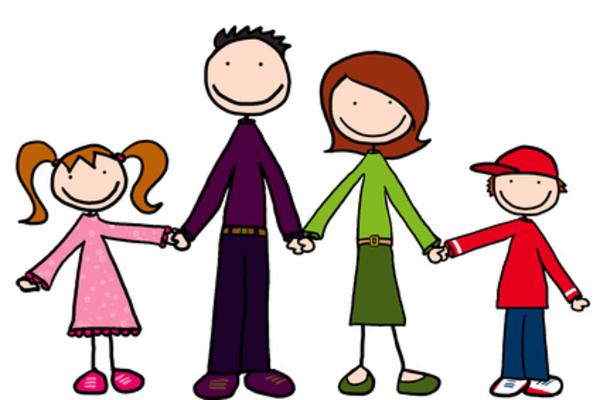
I also miss my friends, and like my family, they are also very supportive of me and help me through tough times. Making friends the first few weeks was hard at Penn State because I am so close to my friends from my hometown, but eventually I was able to branch out and make close friends in State College as well. I probably will not get to see much of them because most of them will already be in preseason for the sport they are playing in college, so my last goodbye was essentially the day I left for summer session at Penn State. We do find ways to keep in touch though, whether that be through texting, calling, or even Skyping each other for sleepovers even when we are hundreds of miles apart.

My room is one of the most comforting places I know. It of course has my warm, queen-sized bed (which I miss so dearly) as well as my closet (which sadly has the majority of my clothes that I could not fit in my suitcase to Penn State). My room was where I pretty much accomplished everything, whether that be getting my homework done, watching hours of Netflix, sleeping/napping, and even eating some meals when it was deemed “left-over night” in my house. Although my dorm room is nice and quaint, it still does not compare to the comforting feeling of my own personal room at home.

I also miss my shower. Showering with flip flops for the past few weeks has been very bothersome, and I can’t wait for the moment where I am finally home and can touch the floor of my bathroom with my bare feet and not feel as if I am going to contract athletes foot or something even worse.

Finally, I miss my kitchen at home. Specifically, I miss the luxury of being able to take out ingredients from my kitchen and cooking them stove top, or even throwing together a fresh sandwich for lunch. I also miss being able to go into my cupboard and grabbing my favorite snack food, and if we were all out of that food, I could just write it down on a list for my mother to simply grab at the local supermarket.

How do you deal with homesickness?
Analysis paper written by Hannah, Chelsea, Casey, and Cat for COMM 100S: Mass Media & Society.
Thesis: (Hannah)
This paper seeks to explain and dissect the movie The Help, a movie that takes place in Mississippi during the 1960s. The main purpose of this movie is to portray the racism that occurred in the South during that time period, as well as emphasize the resentment the African Americans had toward Caucasians for their cruel treatment towards them. In this paper, the authors will first provide a detailed description of the movie and its characters (Chelsea), deconstruct the movie to discover the underlying stereotypes by providing specific examples (Casey), perform a diagnosis on the film which states the authors personal interpretation as well as stating possible harm done by these interpretations (Cat), and lastly this paper will provide a dissemination of the film, which is what the people behind writing the novel/script for the film wanted to communicate with their audience (Hannah).

Detection: (Hannah)
The entire 2011 movie The Help, directed by Tate Taylor, is the subject of this analysis paper. This movie is also available in a 2009 novel form (written by Kathryn Stockett) as well as on DVD and VHS.
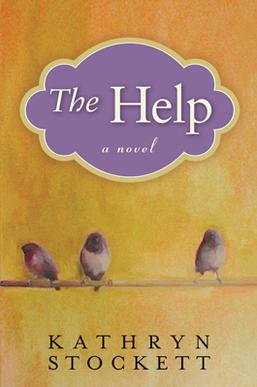
Detailed Description: (Chelsea)
Emma Stone portrays a Caucasian, college-educated, aspiring journalist, Miss Skeeter Phelan. Viola Davis plays Aibileen Clark, a writer and maid who helps Skeeter write a story about colored maids and how they perceived working for racist, white families. Octavia Spencer plays Minny, another maid, who tends to speak her mind in a very blunt and comical way. She has experienced a great deal of hardship in her life, which makes her a very dynamic character. Bryce Dallas Howard plays the antagonist of the film, Hilly Hollbrook. She is very bigoted and a braggart, a former friend of Skeeter, and does not have any compassion towards her family and friends.
Miss Eugenia “Skeeter” Phelan returns to her family’s cotton plantation, Longleaf, from college to find that her beloved maid and nanny, Constantine, has left. Her real dream is to be a writer, but the only job she can find is with the Jackson Journal writing a housekeeping advice column called “Miss Myrna.” Since she knew little about housekeeping, Skeeter turned to her friend’s housekeeper, Aibileen, to hear a first-hand account. Aibileen decides to bring in Minny to get another person’s opinion on the subject. Hearing their stories changes Skeeter as her eyes open to the true prejudices of her upbringing. When Skeeter’s book gets published, Hilly Holbrook becomes fired up due to the details in the book. Hilly and Skeeter grew up best friends, but they now have very different views on race and the future of integration in Mississippi. In the end, Minny reveals a secret about Hilly that puts an end to the madness. The book becomes a powerful force in giving a voice to the black maids and causes the community of Jackson to reconsider the carefully drawn lines between white and black.
The genre of this film is realistic fiction.
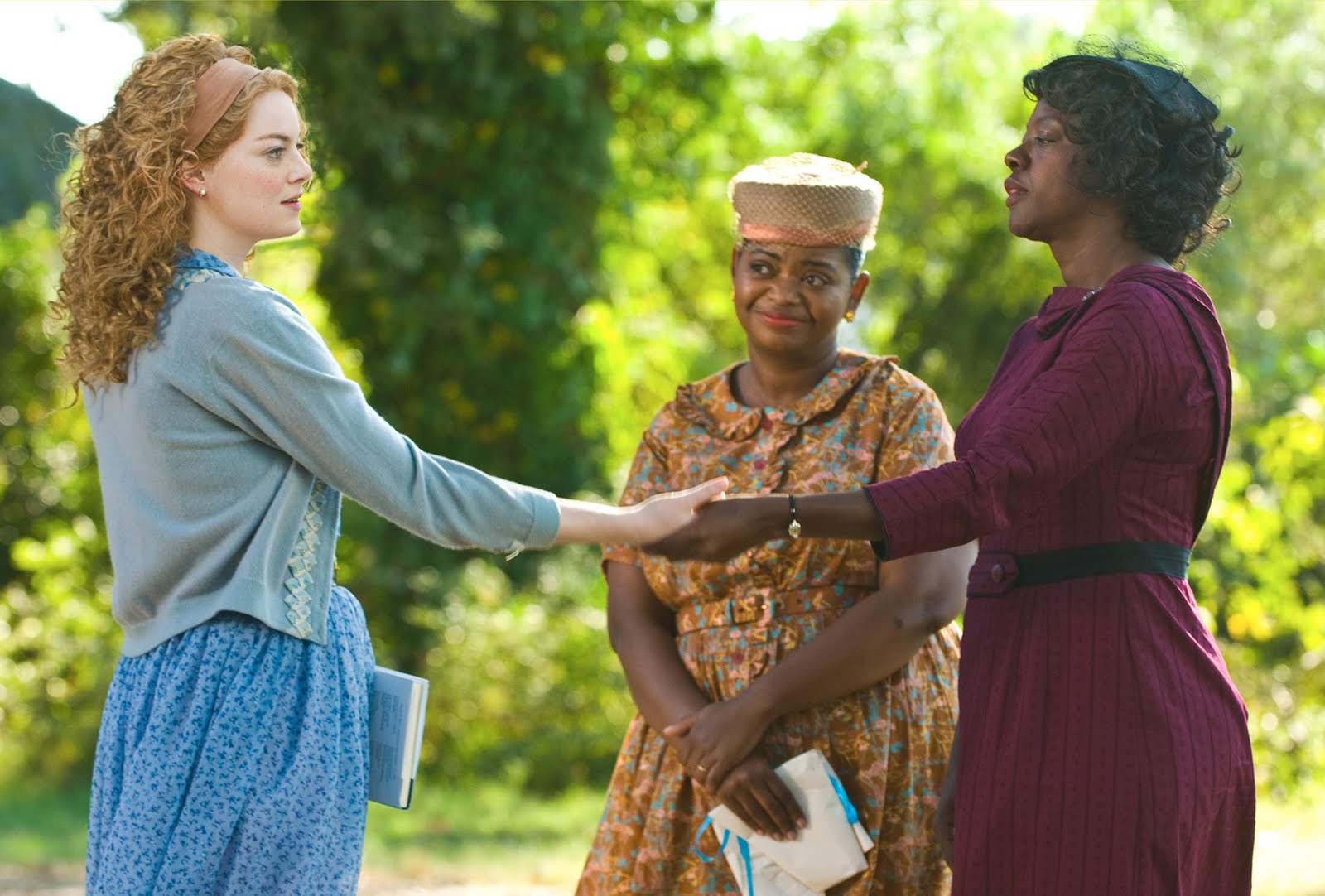
Deconstruction: (Casey)
Through watching and analyzing this movie there are many different stereotypes that can occur. For instance, in this film there is the stereotypical southern racist. The leading character who is somewhat against “the help” is Hilly Holbrook, played by actress Bryce Dallas Howard. She continually insists on making the help’s lives worse. For instance, Hilly suggests that all homes that have the help working for them should get a second bathroom so that they do not use the same restroom. Hilly also pushes it to the point where she wants to frame Aibileen Clark, played by Viola Davis, for stealing, which Aibileen never did. As a result, Hilly gets Aibileen fired from her job.
There are some stereotypical scenes aimed towards the help as well. Celia, performed by actress Jessica Chastain, learns how to cook from the African American maid Minny, played by Octavia Spencer. Minny teaches Celia how to cook fried chicken, which can be stereotypical towards African Americans in general.
One other way this film might come off as stereotypical is how they depict Celia. Celia in the movie is the dumb blonde. She means well but is somewhat clueless about certain things that occur. For an example, she tries to keep Hilly as a friend even though Celia is now with Hilly’s ex. She wants to be one good terms with her so she brings her one of Minny’s pies not realizing what had happened with the last “chocolate” pie that Hilly ate.
Diagnosis: (Cat)
The movie was very touching to all kinds of viewers. Even though the movie was mainly directed toward women, it also showed how different groups of people reacted to the treatment of African American slaves. It appealed to all women because the viewers saw the struggles of the women at home as well, Minny was another maid who was physically abused by her husband while Aibileen comforts her over the phone. When Skeeter first approached African Americans to get their view,they did not feel comfortable opening up to her. But Skeeter’s background with her maid Constantine gave her a personal connection with the other maids and this touched viewers. The movie took a realistic view of how African Americans and whites came together to expose the truth about their treatment. It was a story of struggle on both sides and how they helped each other in the end. The way the story was presented kept off any substantial criticism and unacceptance while revealing the message.

Dissemination: (Hannah)
This movie’s main goal is to emphasize the racism of the South that occurred during the 1960s. This movie also communicates the resentment that the African American slaves had toward all white people in the time period as a result of the way they were cruel treatment. Originally being a novel written in 2009 and although it took place around 50 years ago, this book is also a reminder to not let people fall back into their old ways and exemplifies how severe racism could be. The Help also demonstrates that not everyone who is a certain color fits their stereotype. This is seen through Skeeter, who tries to befriend the African American maids in order to help them and write about their struggles, although they initially reject Skeeter because of their preconceived judgment of her being a white Southerner. In the end however, they accept her as a friend and work together in order to expose an ugly truth.

References:
The Help. Dir. Tate Taylor. Perf. Emma Stone and Viola Davis. Touchstone Home Entertainment, 2011. DVD.
Today was my meeting today for my “real time chat” session with Professor Nichols, my professor for COMM 100S: Mass Media & Society! This meeting lasted for approximately 15 minutes and we discussed all types of topics such as how I am settling into the “college lifestyle” as well as our personal experiences in the beautiful state of Arizona.

Professor Nichols gave me some very valuable information: it is important to meet your professors as well as the professors involved in my major of finance. I plan to meet them some time in the beginning of August, which is when she said they would probably all be moved in preparing for their upcoming fall classes. She also suggested that I should visit the Smeal College of Business, because that is where most of my classes will be when I start becoming more involved with finance as an upperclassman.


We also discussed more personal subjects, such as our experiences in Arizona with the mule-deer, coyotes, rattle snakes, and scorpions (oh my!). She lived in Phoenix and I had visited Scottsdale before, so we both related to one another with our love for the state. The beautiful weather and cacti cannot be beat, even though there may be a significant lack of snowfall.
Case study done by Hannah Drobits, Sam Morris, and Elan Fingles.
Introduction
In May 2006, the infamous MAC vs. PC campaign was constituted by Apple Inc. The series of commercials and advertisements were entitled “Get a Mac”, which contained 66 commercials aired on TV all arguing one main point: that a MAC is better than a PC. The campaign features actors Justin Long, who represents the “MAC”, and John Hodgeman, who plays the role of the “PC”. The two famous actors personify the computers they portray as well as resemble the two founding creators of both companies, a chubbier Bill Gates (for Microsoft) and a younger Steve Jobs (for Apple). Long is the young, better looking, easy going character that is supposed to represent MAC products as being easier to use and much more user friendly. Hodgeman is seen in this commercial as being very dorky looking, up tight, with an overall boring appearance. Apple created this campaign in order to raise sales and take out the biggest competitor they have, Microsoft.

Planning
To create this advertising campaign, the advertiser (Apple Inc.) worked very closely alongside its advertising agency, TBWA/Chiat/Day. The close-working included Lee Clow, the creative director of the entire campaign, flying from Los Angeles to Cupertino weekly to meet up with Steve Jobs to discuss their objectives and opinions on Apple’s “Mac vs. PC” advertisement campaign (Elmer-DeWitt, 2009). Clow was not a stranger to Jobs, and they actually first started working together during the 1980s, when Clow helped release Apple’s advertisements highlighting the newly released Macintosh computer. Also, Clow assisted the company again in 1997, with its “Think Different” ad campaign, officially introducing the famous iMac laptop into the technology world (Leonard, 2009). According to TNS Media Intelligence, Apple ended up spending $264 million on television ads alone in the 2006, the starting year of its campaign.

Execution
As well as airing in the United States, this advertisement campaign was also seen overseas, such as by audiences in Japan, Spain, Italy, the United Kingdom, France, and Germany. For most of these countries, Apple decided to modify the characters and content within these commercials in order to reflect that specific countries culture as well as to avoid being offensive to their beliefs/traditions. An example of this change in the campaign to reach the different overseas markets was the casting change in the UK advertisements, switching out John Hodgeman and Justin Long with David Mitchell and Robert Webb, two moderately famous British television personalities who have their own sitcom in Britain called “Peep Show” (Fowler, Steinberg, Patrick, 2007). However, after these advertisements starting airing overseas in places such as the UK and Japan, respect for the Apple brand fell almost immediately. “According to a YouGov daily survey of 2,000 people, perceptions of the Apple brand, measured on a scale of 1 to 100, fell to 8 from 14 in the five days after the ads first appeared.” (Fowler, Steinberg, Patrick, 2007). The main goal of Apple’s “Mac vs. PC” campaign was to portray owning a Mac as the “cool” and “hip” thing to do over owning a PC computer, in a light-hearted, comedic way.

Research Conducted by the Company
When picking the starring actors in this campaign, there is a clear depiction on who Apple is trying to reach in its audience. The Microsoft brand is represented by John Hodgeman of The Daily Show, and the Apple brand is represented by Justin Long from the hit comedy movie entitled “Dodge Ball”. Hodgeman is constantly portrayed as being a typical “nerd” who looks disheveled and confused. Long however is portrayed as a “hip” young adult who is into things such as blogging and staying in touch with social media. In these commercials, Long is also always dressed casually as well as having an easy-going personality. Renee C. Quinn, a journalist on IPWatchog with a B.S. from Pennsylvania State University mentions that Long’s look, “…lends to the Apple “brand” of being user friendly, easy-going and innovative not to mention fun to explore with options such as iTunes, iPhotos and iLife.” When searching for someone to represent their brand to billions of people globally, they needed to find someone who was easy to relate to and someone that fit the profile of their target audience. Long qualified as fulfilling both of those tasks by having a moderate, conversational tone as well as being a young, white male who despite given his ethnicity and age, can actually appeal to a broader range of the population due to how approachable he comes off as. Apple’s target audience is extremely broad, and could best be described as the young adult to around retirement age, all ethnicities, both genders, as well as a wide range of economic statuses due to Apple having some products that are significantly cheaper than others (ie. 16GB iPhone 5C is $99 compared to its 32GB counterpart priced at $199).

Retrieval and Review Collateral
The success of an ad campaign is often measured by its longevity. According to Mac World, “if a campaign runs for a long time, it is successful.” Which leads one to believe that because this campaign lasted quite a long time, it was definitely a success. Beginning in May of 2006, and ending in 2010, the campaign consisted of a whopping 66 commercials. It would hard to conclude that the success of Apple during this period happened by chance. These commercials aired during a time of tremendous growth in Mac sales. The Cupertino Kids reported a 12% increase year after year after the start of this campaign, resulting in a 39% increase in overall sales by the end of the 2006-year. Each “episode” covered a difference that existed between the two tech giants. Where PC’s lacked in one area, Apple would show where they are adequate in the same area. Some of the major points that Apple made about PC’s include that they are extremely prone to crashing, catching virus’, are only good for business related work, used by older, less “hip” men, lacks simplicity, and is known to frustrate its customers. Additionally, according to IDC, a technology industry research firm, as a result of this campaign launched by Apple, their share of the computer desktop market in the United States has more than doubled. IDC also reported that Apple’s stock price has risen by 142 percent since 2006, when the advertisements were first released.

Evaluation
A campaign that screams such bold statements is sure to start an internet swirl of feedback. Without much surprise, Apple “fanboys” loved the string of commercials presenting the superiority of the Mac. On the contrary, PC users stated their case where they believed Apple was egregiously wrong. “There are other people whom the ads could have the opposite of a desired effect on. Some people don’t want overbearing statements such as ‘Macs are better at like stuff’ without some sort of backing” (Richard). One of most interesting ads entitled, “Meant for Work,” caused a great deal of stir out of all the 66 total ads when it was released. It shows the PC covered in stickers. The PC is complaining about how he just wanted to do some spreadsheets, work with employers, and do business things but these “kids” happened. Kids have these wild imaginations, blogs, movies, and pictures they like doing. These activities have been driving him crazy and put him into “sleep mode.” Interestingly enough, once Microsoft released that they would no longer be providing support for Windows XP, Forbes released the article, “Bring Back Apple’s Mac Vs. PC Ads Since Windows XP Isn’t Supported”. Overall, the media certainly liked this campaign and thought the ads were positive and effective for Apple. These ads certainly did lead to increasing sales, Apple receiving several accolades, as well as cementing a negative stereotype towards PC’s for all of the viewers.
Personal Evaluation/Other Campaigns
PC’s are even more susceptible to viruses and problems now because of the drop of support. In addition people will now be looking for different types of platforms, such as Mac’s, which will increase Apple’s sales and boost business for them as well; certainly not what Microsoft was hoping for. Years and years later Microsoft struck back very similarly with their strategy in their Windows Tablet vs. iPad commercial. These commercials actually turned out to be quite hilarious and ironic. It starts off with Siri saying, “Oh no here we go again” referring “past” commercials from the original “Get-a-Mac” campaign. The entire Microsoft campaign is a comparison between the two tablets and what they can do. Microsoft points out all things their Windows tablet can do and the features it has that the iPad does not such as its USB drive, snapping on keyboard, as well as its significantly lower price. “Less talking, More Doing” it ends with. The Apple vs. Microsoft battle has existed for years with each company always taking shots at each other. Apple has been known to throw many witty comments into their World Wide Developer Conference Keynotes. Even taking shots at a specific time during a Microsoft presentation when their demo tablet failed to work. These two companies are always thought of as enemies and opposites: consistently battling each other in all individual technology markets with their products. There is great irony in this however. Although Steve Jobs has passed, him and Bill Gates were known to have an incredible relationship, and were great friends during all of the feuds. Another similar campaign to this was also the DirectTV vs. Dish Network, where DirectTV would also describe how they were superior to Dish in each one of their commercials.


Retaliation
Additionally, countless amounts of parodies have been made which attributes to the success of the ad campaign, including the triggering of the “I’m a PC” Microsoft campaign. In these Microsoft tried to disprove everything Apple stated in their commercials by showing all kinds of different people stating that they are a “PC.” It is however difficult to say whether the ads worked or not. Studies have shown that most people do not actually know if they are persuaded by an advertisement because so much of it is done psychologically. Therefore for one to say the ad did not work on them is not always a completely valid statement. This can work both ways. However, often someone says that something worked for them, then it most likely did. Their sales showed a finite increase so to claim it did not work would be difficult. People often think there is no such thing as bad publicity, so even if this did attract much negative attention, it still attracted a great deal of it. This “attention” (whether positive or negative) Apple used to their advantage and attribute to their immense success today.

References
DeWitt, P. (2009, August 30). Mac vs. PC: Inside the ad wars. Fortune Mac vs PC Inside the adwars Comments. Retrieved July 22, 2014, from http://fortune.com/2009/08/30/mac-vs-pc-inside-the-ad-wars/
Garner, B. (2009, December 14). Apple named ‘Brand of the Decade’ by Adweek. Apple named ‘Brand of the Decade’ by Adweek. Retrieved July 24, 2014, from http://appleinsider.com/articles/09/12/14/apple_named_brand_of_the_decade_by_adweek.html
Fowler, G., Steinberg, B., & Patrick, A. O. (2007, March 1). Mac and PC’s Overseas Adventures. The Wall Street Journal. Retrieved July 22, 2014, from http://online.wsj.com/news/articles/SB117271641509622894
Leonard, D. (2009, August 29). Hey, PC, Who Taught You to Fight Back?. The New York Times. Retrieved July 22, 2014, from http://www.nytimes.com/2009/08/30/business/media/30ad.html?pagewanted=all&_r=0
Jones, C. (2014, April 14). Bring Back Apple’s Mac Vs. PC Ads Since Windows XP Isn’t Supported. Forbes. Retrieved July 24, 2014, from http://www.forbes.com/sites/chuckjones/2014/04/14/bring-back-apples-mac-vs-pc-ads-since-windows-xp-isnt-supported/
Quinn, R. C. (2009, December 1). Mac vs. PC: A Simplistic Yet Effective Marketing Strategy.IPWatchdogcom Patents Patent Law Mac vs PC A Simplistic Yet Effective Marketing Strategy Comments. Retrieved July 22, 2014, from http://www.ipwatchdog.com/2009/12/01/mac-vs-pc-a-simplistic-yet-effective-marketing-strategy/id=7531/
Rhoads, K. (2007, January 10). Get-a-Mac Campaign Analysis. . Retrieved July 24, 2014, from http://www.workingpsychology.com/download_folder/GAM_Campaign_Analysis.pdf
Today in class, a special speaker came in to discuss the dynamics of the advertisement industry in two separate ways. This speaker was Professor McAllister, the head of the Media Studies department here at Pennsylvania State University. The first way he described the advertisement business as a whole was from a cultural perspective, which was as he suggested, the way the advertisements and media companies want us to see it. He said this was essentially just watching, reading, or listening to these advertisements, and being captivated/manipulated by their messages in order to buy whatever product that was being advertised. Advertisement companies especially try to target us college students as the audience because they view us as being influenced very easily, as well as an opportunity to make more money because we are viewed as having more “disposable” income that we are readily looking to spend. They can influence us in several ways, such as using creative techniques to get our attention, as well as using strategies such as selecting a famous actor or athlete to represent a product in order for us to be more apt to go out and purchase that product.
The other way he described the advertisement business was the way that he said the business would most likely not want us to see, and that is through statistics, numbers, and exposure of their advertising methods/techniques in order to be able to critically analyze what and how a product is being shown to us. The statistics he showed us in the beginning essentially highlighted the fact that advertisement investments in print media (newspapers and magazines) was significantly decreasing, as opposed to digital media (internet, television) which was increasing. He also showed us statistics on the major contributors to the advertising industry, such as the advertisers themselves, the advertisement agencies, as well as the media outlets that would be displaying these advertisements.

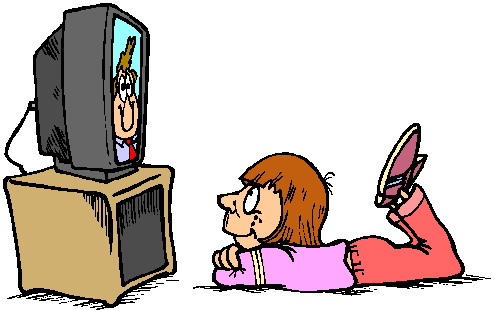
Overall, it was quite surprising to realize how much money is put into advertising from these companies, especially internationally, where spending by the “top advertisers” was in the billions. Some of these top advertisers included Proctor and Gamble, Comcast, Verizon, Time Warner Cable, and Disney.


The advertising agencies were emphasized as being the most important element in the advertising process because they actually are payed and hired by the advertisers to create a campaign for them and strategically place the advertisements they create on key mediums in order to promote the advertisers product to the best of their ability. The agencies include several that were named after the men that created them, however, the newer ones had more creative names, such as SapientNitro, who specializes in more electronic media advertising, which is why they were included as one of the top agencies of today.


Overall, I very much enjoyed this presentation and I feel that I learned a lot about the advertisement industry and process that will allow me to focus on advertisements more critically and not be so easily manipulated as the companies advertising want/expect me to be.
Critical Reading Analysis: The Philadelphia Tribune
The Philadelphia Tribune is the most prominent and the oldest running African American print and online newspaper that was founded in 1884. The Tribune is published every Tuesday, Wednesday, Thursday, Friday, and Sunday. This newspaper discusses a wide variety of news topics such as state and regional news, health, lifestyle, entertainment, and sports (football, basketball, and baseball). The Philadelphia Tribune also produces the Tribune Magazine, Entertainment Now!, Sojourner, The Learning Key, and The Sunday Tribune (“About the Philadelphia Tribune”).

The first point that is apparent when reading through all of the articles within this newspaper is that they are all based upon or dealing with the African American population as well as a few other minority groups. Specifically this is seen with an article on Pakistani educational activist and hero Malala Yousafzai for speaking up against the wrong doings of the Taliban. Mainly in the state and regional news section, there are articles dealing with state and federal governments that do concern white officials, but none of them are emphasized much upon. On the Tribune’s media kit information section, it gives a clear insight into the demographics they are looking for in the individuals of their audience: African American, 30-60 years of age, college graduates, equal sex ratio, home owners, and people who make an average income of $50,000 or higher per year. The main articles that appear when the headers are clicked on or when flipping through the first few pages of the newspaper regardless of what category they are classified under, are dealing with African Americans in the Philadelphia area.
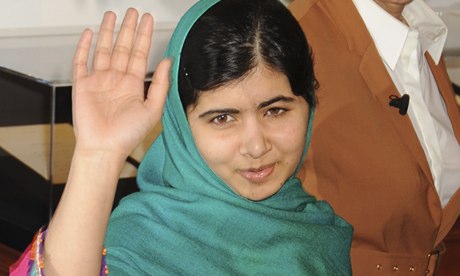
The news articles that make up the Philadelphia Tribune are mainly covered in an objective manner, meaning that they present a fair, balanced, and impartial representation of the information they are presenting or the event that took place. They are also written in third person (excluding the commentary and obituary sections) and also quotes are used in the majority of the articles from reliable sources or people/organizations that are relevant to the subject matter. However, these articles do not all have one crucial part in making them completely objective, and that part that is missing is that both sides of the story are not always present in most of their articles. Specifically, this can be seen in an article entitled “Ex-employees of Philly Abortion Doctor Sentenced”, which was recently published on June 26th and written by an unspecified author for the Tribune. This article briefly describes how two women who worked at a local abortion clinic in Philadelphia were sentenced to jail for their unjust actions of killing babies who were born alive. This article does not only minimally describe what kind of business the two women were in, but the details that were given clearly reflected the views of the newspaper itself. This is seen in the quote, “Investigators have described his filthy, rundown clinic as a ‘house of horrors’” (Associate Press, 2014). This is one of the only details describing the actual clinic, and the terms used to describe it clearly reflect some of the beliefs the newspaper most likely has towards abortion (pro-life, liberal), which also goes along with the entire Tribune’s liberal attitude in its other articles as well.

Compared to other mainstream publications such as The New York Times, the Philadelphia Tribune is focused on local issues in the Philadelphia area as well as within Pennsylvania rather than ones concerning a broader spectrum of the population such as global issues or even issues in nearby states. Another significant difference this newspaper has from the mainstream newspapers is the amount of times an article on the Tribune gets read versus one from The New York Times. Millions of people read an article from The Times, whereas the counters on the Tribune articles only range from approximately 150 to 450 readers per article, even after an article has been published for several days. This was not a surprising statistic seeing as the Tribune is centered mostly towards a specific demographic group such as African Americans, whereas the mainstream print and online newspapers appeal to a broader range of demographics because they include articles originating from every part of the world. Another difference between the two types of newspapers is the journalists that are actually writing the articles. On Tribune, these journalists are predominantly all African American including Damon C. Williams, Wilford Shamlin II, and Larry Miller to just name a few. This is different from the mainstream newspapers because they tend to use journalists of all genders, ages, and ethnic backgrounds in order to also attract a wider range of demographics in their individuals who read their articles.

The advertisements on the Tribune are also very different than ones on the mainstream newspapers in order to appeal to a more targeted audience. To have an advertisement on the Tribune would be about $100-$5,000 depending on the size and placement, whereas on a mainstream newspaper, the cost would be somewhere in the hundred thousand and up. On the Tribune, there are few advertisements and they are all representing the same company, Key Stone First, a healthcare plan licensed by the Cross Blue Shield Association. Firstly, there are minimal advertisements on the Tribune because it is not as prominent as a mainstream newspaper, and therefore companies do not see any monetary incentives for advertising with them. Secondly, the people pictured in these Key Stone First ads are both African Americans who are roughly around the same age, the only difference being one is a male and one is a female. The advertisements on a mainstream newspaper such as The New York Times are ones ranging from entertainment to shopping including ones for an HBO series or television event, a Marc Jacobs shopping ad, or a Citi Capital credit card deal. These advertisements on The Times also rarely include people on them and instead usually use objects or material goods to convey their purpose. However, these advertisements on these two different types of newspapers are similar in the fact that one may appear on the other newspaper, just using different symbols to appeal to the different audiences that the two newspapers draw upon.

After reading several articles in this newspaper, it is not hard to see the values it is trying to emphasize and the audience it is trying to capture. With several articles dealing with enlightenment into tough African American lifestyles in the Philadelphia areas. An example of this introduction to their hard and dangerous lifestyles is the article entitled “Chester Residents Describe Life Dodging Bullets” which describes how people in the town of Chester have to live in fear every day that they will not be killed by getting in between a cross fire or caught in a drive-by. Its liberal views are also apparent through the abortion article mentioned previously and an article entitled “Corbett Holds Schools Hostage”, where the journalist shows clear biases against the House of Representative Republicans. The journalist also says that Republican Governor Tom Corbett has hidden motives in the passing of the Philadelphia school funding bill based on current revenues by wanting to pass the cigarette tax bill with it, emphasizing again the newspaper’s favoritism towards more liberal, Democratic views.
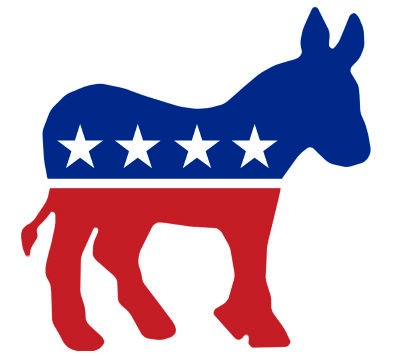
When thoroughly reading through the articles of the Philadelphia Tribune, there are several positive and negative elements that can be drawn from its publication. It was pleasant to read about stories that would not normally be mentioned such as a story centered on the practices of the Greater Enon Missionary Baptist Church as well as a celebratory article written about a single African American mother of two children who had managed to successfully graduate from LaSalle University while also working several jobs. Although this newspaper did have its positive elements, there were also several negative aspects. Even though this newspaper did include articles that normally would not be seen in a mainstream newspaper, they are too focused on one ethnicity (African American), which does not supply their audience with a lot of adversity. Also, the articles in the Tribune did not go into as much detail as a mainstream newspapers do in their stories, most likely due to the smaller size of the newspaper leading it to have less resources and journalists compared to a mainstream publication.
References:
About The Philadelphia Tribune. (n.d.). Philadelphia Tribune.
Ex-Employees of Philly Abortion Doctor Sentenced. (2014, June 6). Philadelphia Tribune.
Media Kit. (n.d.). Philadelphia Tribune.
While I lived at home, of course I was lazy and incapable of doing my own laundry for several of my own made-up reasons, such as too much homework, too tired from a soccer game, or the old “I don’t have time, I’m going to a friend’s house!” excuse. I realized that I would eventually have to do my own laundry at college though, and that my mommy wouldn’t be there to do it, and even fold it nicely in my drawers once it was done.


I learned how to do my laundry for the first time this week and it certainly was quite the experience. After traveling 15 minutes on each floor trying to find where the washers and dryers were, someone kindly told me they were in the basement. Okay, easy enough, I thought. Then as I made my way down into the basement and through the doors, I realized I probably should have brought my roommate along because it was quite eerie (flickering lights, odd smell, I could go on and on).

When I finally found the washers, it took about four people to tell me that I just throw my laundry in the machine with my detergent pod, pay, and pick my setting (which took me another five minutes…did I want delicate, colors, or whites?).

I am proud to say that after my clothes were done in the washer, the transition to the dryer went very smoothly, and I was able to do at least THAT part all by myself. Now I am officially a pro at doing my own laundry, and maybe I’ll start doing it at home during breaks as well (or maybe not…thanks mom!).
Recent Comments